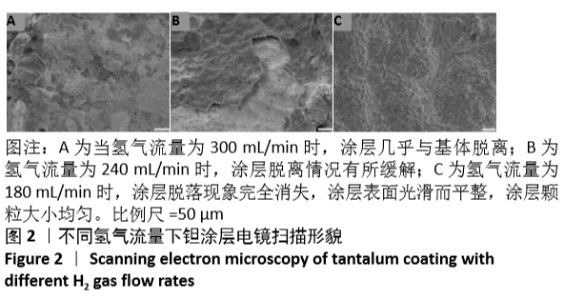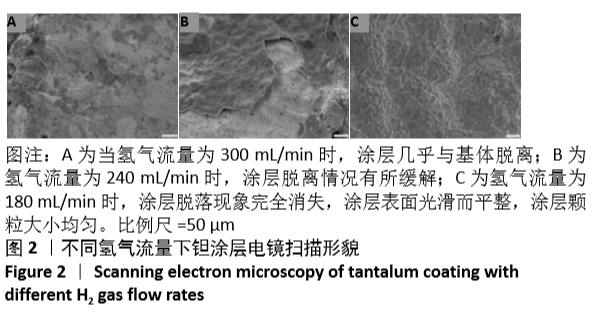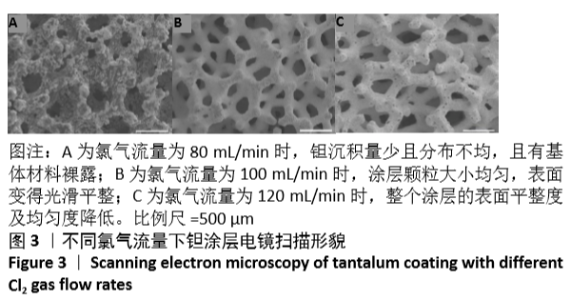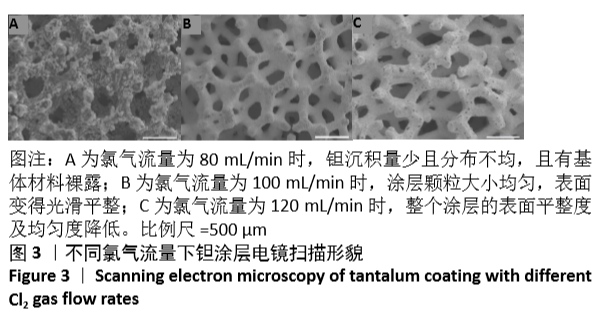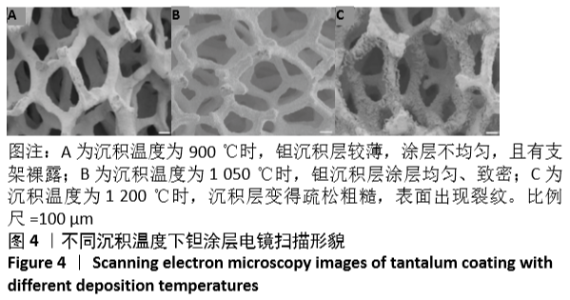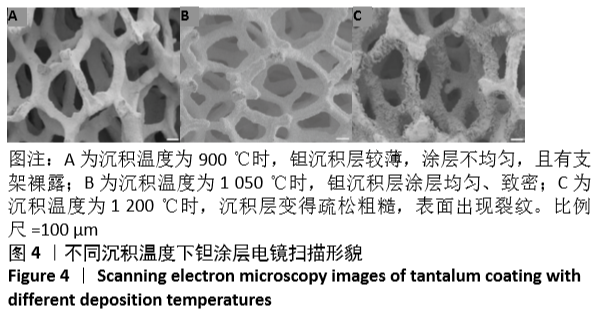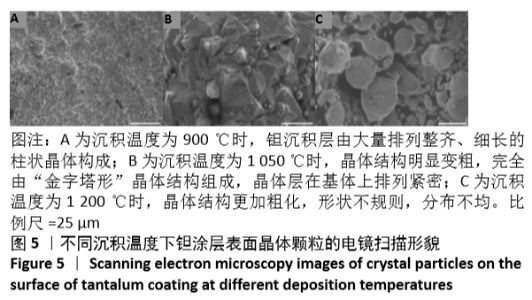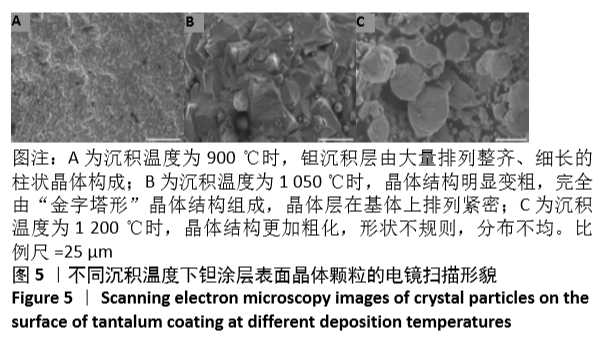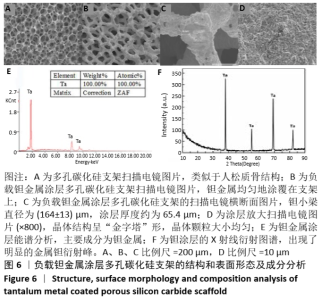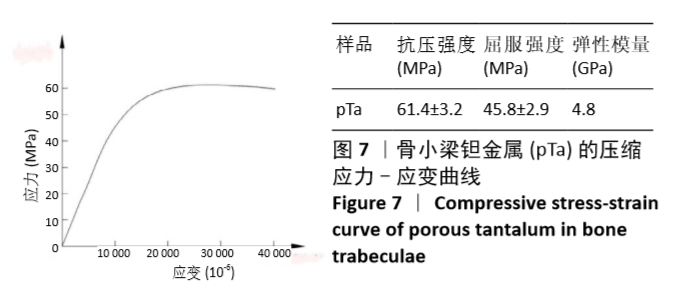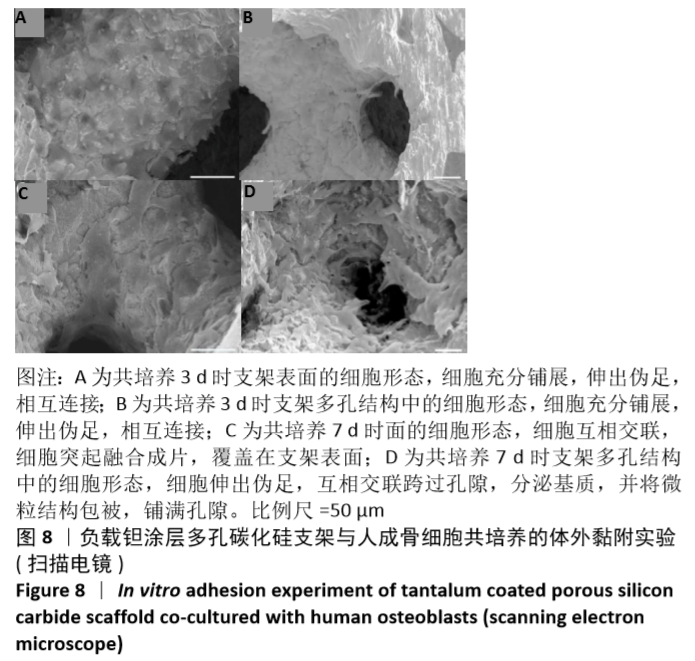[1] LOCS J, BERZINA-CIMDINA L, ZHURINSH A. Development of Biomorphic SiC Ceramics for Biomaterial Purposes.World Economy. 2008;20(6): 48-51.
[2] WU L, XU X, LI B, et al. Biocompatibility of silicon carbide foam.Chin J Mater Res.2008; 22:58-62.
[3] GRYSHKOV O, KLYUI N, TEMCHENKO VP, et al. Porous biomorphic silicon carbide ceramics coated with hydroxyapatite as prospective materials for bone implants.Mater Sci Eng C Mater Biol APPl.2016; 68:143-152.
[4] GONZALEZ P, SERRA J, LISTE S, et al. New biomorphic SiC ceramics coated with bioactive glass for biomedical applications.Biomaterials. 2003;24(26):4827-4832.
[5] KATO H, NAKAMURA T, NISHIGUCHI S, et al. Bonding of alkali- and heat-treated tantalum implants to bone.J Biomedical Mater Res. 2000; 53(1):28-35.
[6] QIU ZY, CHEN C, WANG XM, et al. Advances in the surface modification techniques of bone-related implants for last 10 years.Regen Biomater. 2014;1(1):67-79.
[7] BLACK J. Biological performance of tantalum.Clin Mater. 1994;16(3): 167-173.
[8] BURKE GL. The corrosion of metals in tissues; and an introduction to tantalum. Can Med Assoc J.1940;43(2):125-128.
[9] GOLDBERG SJ, PORPER RP, CHYZUS P, et al. A fractured mandible, from initial operation to removal of tantalum mesh.Oral Surg Oral Med Oral Pathol.1976;41(1):32-38.
[10] WAUTHLE R, JOHAN VDS, AMIN-YAVARI S, et al. Additively manufactured porous tantalum implants. Acta Biomater.2015; 14: 217-225.
[11] DUAN YH, LIU L, WANG L, et al. Preliminary study of the biomechanical behavior and physical characteristics of tantalum (Ta)-coated prostheses. J Orthop Sci.2012;17(2):173-185.
[12] BALAGNA C, FAGA MG, SPRIANO S. Tantalum-based multilayer coating on cobalt alloys in total hip and knee replacement.Mater Sci Eng. 2012; 32(4):887-895.
[13] HEE AC, Zhao Y, JAMALI SS, et al. Characterization of tantalum and tantalum nitride films on Ti6Al4V substrate prepared by filtered cathodic vacuum arc deposition for biomedical applications.Surf Coat Technol.2019;365:24-32.
[14] LEE YJ, LEE TH, KIM DY, et al. Microstructural and corrosion characteristics of tantalum coatings prepared by molten salt electrodeposition.Surf Coat Technol.2013;235:819-826.
[15] LI X, WANG L, YU X, et al. Tantalum coating on porous Ti6Al4V scaffold using chemical vapor deposition and preliminary biological evaluation.Mater Sci Eng C Mater Biol Appl.2013; 33(5):2987-2994.
[16] BOBYN JD, STACKPOOL GJ, HACKING SA, et al. Characteristics of bone ingrowth and interface mechanics of a new porous tantalum biomaterial.J Bone Joint Surg Br.1999;81(5):907-914.
[17] KASLIWAL MK, BASKIN DS, TRAYNELIS VC. Failure of porous tantalum cervical interbody fusion devices: two-year results from a prospective, randomized, multicenter clinical study.J Spinal Disord Tech. 2013;26: 239-245.
[18] KWONG Y, DESAI VV. The use of a tantalum-based augmentation patella in patients with a previous patellectomy.Knee.2008;15:91-94.
[19] NEBOSKY PS, SCHMID SR, PASANG T. Formability of porous tantalum sheet-metal. IOP Conf Ser Mater Sci Eng.2009;4:012018.
[20] BALLA VK, BANERJEE S, BOSE S, et al. Direct laser processing of a tantalum coating on titanium for bone replacement structures.Acta Biomater.2010;6(6):2329-2334.
[21] ISO.13314: Mechanical testing of metals–ductility testing–compression test for porous and cellular metals.ISO 2011.https://www.iso.org/standard/53669.html.
[22] 吴琳,徐兴祥,王禄增,等.泡沫SiC细胞相容性及动物体内植入实验研究[J].无机材料学报,2010,15(2):211-215.
[23] LEVESQUE A, BOUTEVILLE A. Fabrication and Properties of Tantalum Film Deposited on Titanium through LP-CVD from TaCl5-H2.Chem Vap Depos.2004;10(1):23-28.
[24] ZHANG K, FAN Y, DUNNE N, et al. Effect of microporosity on scaffolds for bone tissue engineering. Regener Biomater.2018; 5(2):115-124.
[25] BARATI D, KARAMAN O, MOEINZADEH S, et al. Material and regenerative properties of an osteon-mimetic cortical bone-like scaffold. Regener Biomater.2019;6(2):89-98.
[26] ZARDIACKAS LD, PARSELL DE, DILLON LD, et al. Structure, metallurgy, and mechanical properties of a porous tantalum foam.J Biomed Mater Res.2001;58(2):180-187.
[27] 王茜,滕雪峰,甘洪全,等.国产pTa对兔成骨细胞生物学行为及功能的影响[J].中国组织工程研究,2018,22(30):4757-4762. |
